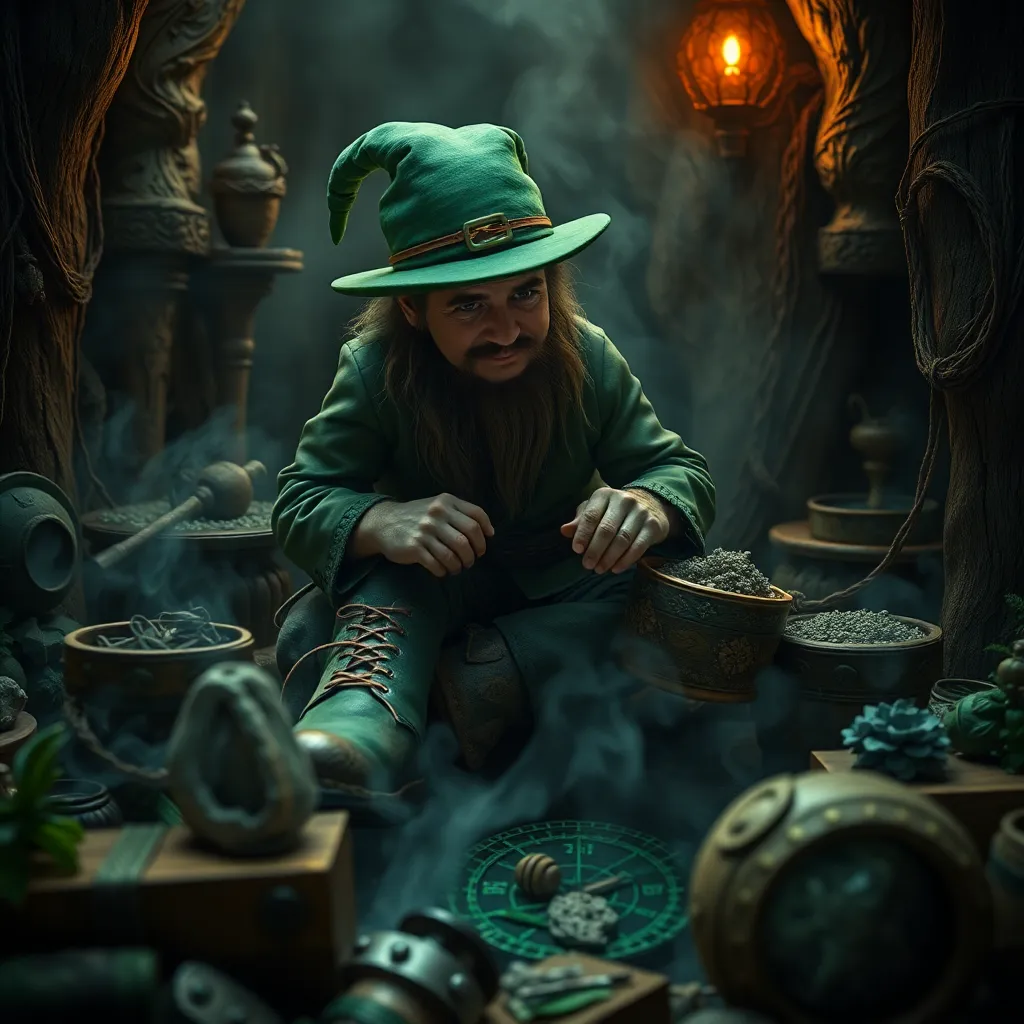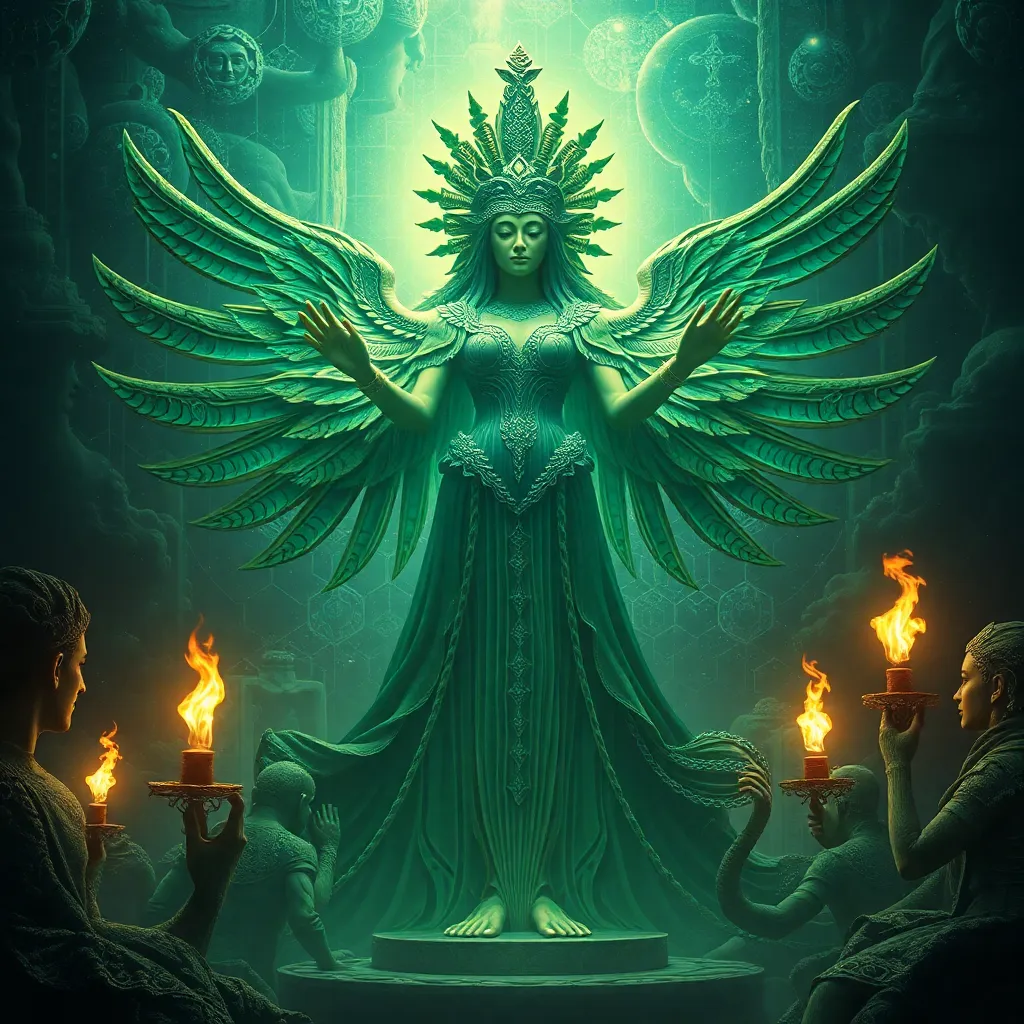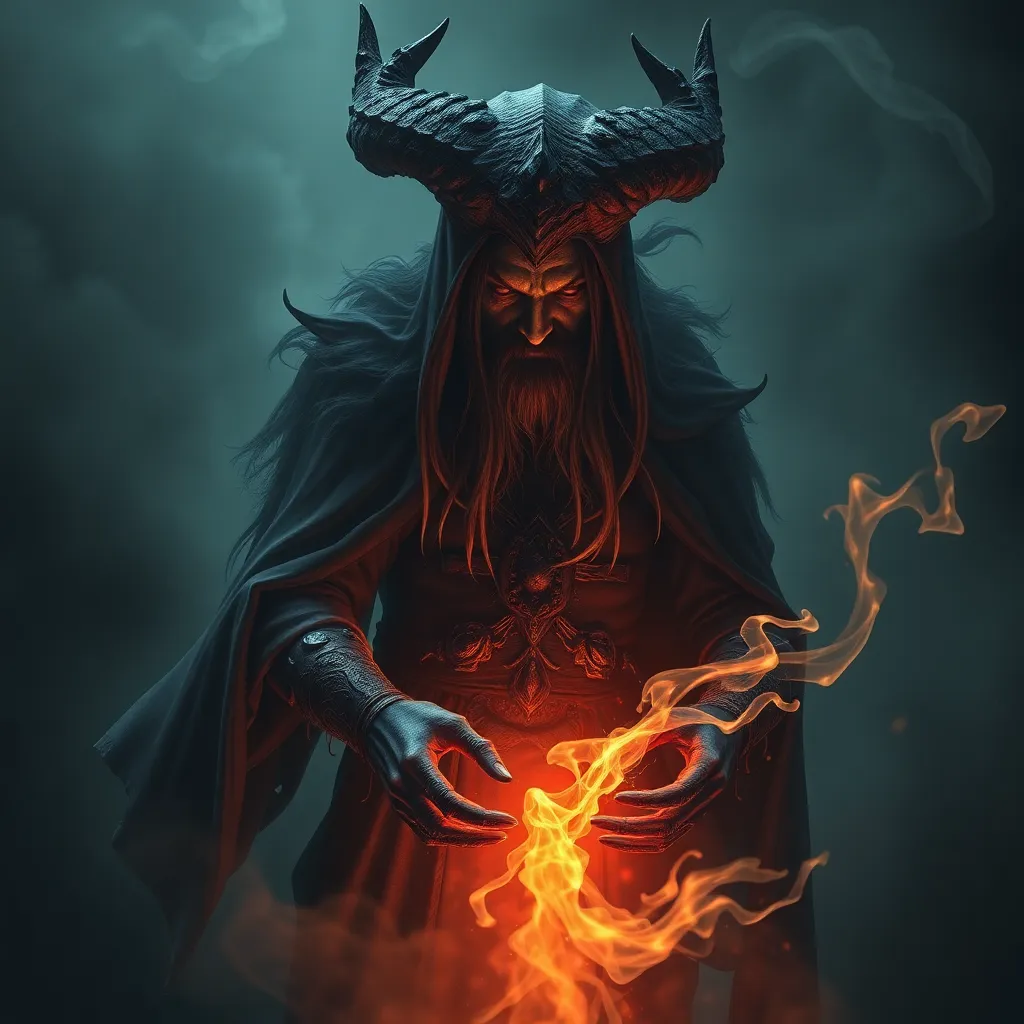The Leprechaun’s Craft: Examining the Art of Shoemaking in Irish Folklore
I. Introduction
The world of Irish folklore is rich with enchanting tales, and one of its most beloved figures is the leprechaun. These mischievous little fairies are often depicted as cobblers, creating exquisite shoes that are not only symbols of craftsmanship but also imbued with magic. The significance of shoemaking in the context of leprechauns extends beyond mere craft; it represents themes of identity, journey, and the connection between the physical and the mystical. This article aims to delve into the art of shoemaking as it relates to leprechauns, exploring its historical roots, cultural impact, and continuing legacy in contemporary society.
II. The Mythology of the Leprechaun
A. Origins and evolution of leprechaun folklore
The origins of leprechaun folklore can be traced back to ancient Irish mythology, where they were initially depicted as solitary fairy shoemakers. Over centuries, their characteristics evolved, and they became associated with wealth, mischief, and trickery. Leprechauns were seen as guardians of hidden treasures, often leading humans on wild chases in exchange for their gold.
B. Characteristics and traits of leprechauns
Leprechauns are typically characterized by their small stature, often described as no taller than a child. They are known for their distinctive green clothing, buckled shoes, and a penchant for mischief. Despite their playful nature, they are also shrewd and cunning, often outsmarting those who seek to capture them.
C. The leprechaun’s role in Irish culture
In Irish culture, leprechauns symbolize Irish identity and folklore. They embody the spirit of the Irish people, representing resilience and wit. Their stories are intertwined with the history and landscape of Ireland, making them an enduring symbol of national pride.
III. The Craft of Shoemaking: A Historical Perspective
A. Historical significance of shoemaking in Ireland
Shoemaking has a long and storied history in Ireland, dating back centuries. It was not only a necessary trade but also an art form that reflected the culture and traditions of the time. Shoemakers were highly regarded in their communities, as their craft provided essential footwear for people from all walks of life.
B. Traditional techniques and materials used in shoemaking
Traditional Irish shoemaking involved several techniques and materials, including:
- Hand-stitching using strong thread to ensure durability
- Utilizing leather sourced from local tanneries
- Employing wooden lasts to shape the shoes
- Incorporating decorative elements, such as intricate stitching and embellishments
C. The connection between leprechauns and craftsmanship
Leprechauns, as master shoemakers, are often depicted as possessing unparalleled skills in their craft. Their shoes are said to be not only well-made but also enchanted, reflecting the idea that the leprechaun’s craft is both practical and magical. This connection elevates shoemaking to a form of art that transcends mere functionality.
IV. The Symbolism of Shoes in Folklore
A. Shoes as a representation of journey and identity
In folklore, shoes represent more than just footwear; they symbolize the journey of life and one’s identity. A person’s shoes tell a story of their travels, experiences, and social status. In the context of leprechauns, their shoes are often seen as gateways to adventure and exploration.
B. The importance of footwear in Irish mythology
Footwear holds significant importance in Irish mythology, often appearing in tales that emphasize the idea of movement and change. Shoes are associated with the paths we take and the choices we make, reinforcing the notion of destiny and fate.
C. Symbolic meanings attributed to leprechaun-made shoes
Shoes crafted by leprechauns are said to possess magical properties. They symbolize prosperity, luck, and the promise of adventure. Wearing such shoes is believed to bring good fortune and open doors to new opportunities.
V. The Art of Shoemaking: Techniques and Traditions
A. Overview of traditional shoemaking processes
The traditional shoemaking process involves several key steps:
- Designing the shoe based on the intended use and style.
- Cutting the leather into the appropriate shapes.
- Creating a wooden last to shape the shoe.
- Assembling the shoe by stitching and attaching components.
- Finishing touches, such as polishing and adding embellishments.
B. Unique features of leprechaun shoemaking
Leprechaun shoemaking is characterized by its whimsical and enchanting features, such as:
- Use of vibrant colors and patterns
- Incorporation of magical symbols and motifs
- Ability to adjust size and shape at will, reflecting the leprechaun’s magical nature
C. The role of magic and enchantment in shoe creation
Magic plays a crucial role in the art of leprechaun shoemaking. It is believed that their shoes can grant wishes, enhance the wearer’s abilities, or even lead them to hidden treasures. This magical aspect adds an additional layer of intrigue and allure to their craft.
VI. Contemporary Interpretations of Leprechaun Shoemaking
A. Modern adaptations of leprechaun shoemaking in arts and crafts
In contemporary society, the craft of leprechaun shoemaking has inspired various forms of artistic expression. Artists and crafters often create whimsical shoe designs that pay homage to the traditional techniques while incorporating modern aesthetics.
B. Influence of leprechaun lore on contemporary shoemakers
Many modern shoemakers draw inspiration from leprechaun lore, infusing their creations with elements of folklore. This influence is evident in the use of vibrant colors, unique designs, and storytelling through footwear.
C. Preservation of traditional shoemaking techniques
Efforts to preserve traditional shoemaking techniques continue, with workshops and classes dedicated to teaching the craft. Artisans strive to keep the legacy of leprechaun shoemaking alive, ensuring that the skills and stories are passed down through generations.
VII. The Cultural Impact of the Leprechaun’s Craft
A. Representation of leprechaun shoemaking in literature and media
Leprechaun shoemaking has been depicted in various forms of literature and media, from children’s books to movies. These representations often highlight the magical nature of the craft and its connection to Irish culture.
B. The influence of leprechaun folklore on Irish identity
Leprechauns play a vital role in shaping Irish identity, serving as symbols of national pride and cultural heritage. Their stories resonate with themes of resilience and ingenuity, reflecting the spirit of the Irish people.
C. Festivals and events celebrating leprechaun culture
Throughout Ireland, various festivals and events celebrate leprechaun culture, often featuring traditional music, dance, and crafts. These gatherings provide an opportunity for communities to come together and honor their folklore and heritage.
VIII. Conclusion
In conclusion, the craft of shoemaking as associated with leprechauns is a fascinating intersection of art, culture, and myth. It highlights the significance of craftsmanship in Irish folklore and the enduring legacy of leprechauns in shaping cultural identity. As we explore the enchanting world of leprechaun shoemaking, we are reminded of the powerful stories that shoes can tell, representing our journeys, identities, and the magic that lies within our traditions.



